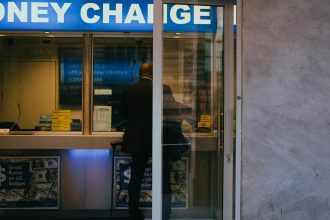Government Shutdown Firings: 5 Critical Questions Answered
The landscape of federal employment can be fraught with uncertainty, especially during periods of political gridlock. One of the most contentious issues arising from recent budget impasses has been the legality and ethics surrounding government shutdown firings. When the federal government grinds to a halt, the impact on its workforce is immediate and often severe. Questions frequently surface regarding the extent of executive power, the rights of federal employees, and the long-term implications of such actions on civil service integrity. This article delves into the complexities of these dismissals, shedding light on the legal challenges and the protections meant to safeguard the federal workforce.
Understanding Federal Employment During a Shutdown
A government shutdown occurs when Congress fails to pass appropriations legislation to fund federal agencies. While many “non-essential” federal employees are furloughed without pay, a core group of “essential” personnel continues to work. However, the scenario becomes far more complicated when agencies take more drastic measures, such as terminating employees. These actions raise profound questions about administrative authority and the security of federal jobs.
Historically, federal employees have enjoyed certain protections designed to insulate them from political whims and ensure a stable, merit-based civil service. These protections are enshrined in various statutes and regulations, including those governing reductions in force (RIFs) and adverse actions. The unique circumstances of a shutdown, however, can sometimes create legal ambiguities that test the boundaries of these established safeguards.
When Agencies Face Budget Impasses
During a funding lapse, federal agencies operate under severe constraints. Their primary mandate is to cease non-essential activities, leading to furloughs. The decision to dismiss employees, rather than furlough them, is a significant escalation that carries substantial legal and ethical weight. Such decisions are often scrutinized by courts and oversight bodies, especially if they appear to circumvent established procedures or take advantage of a crisis situation.
Government Shutdown Firings: Legal Precedents and Protections
The legal framework governing federal employment is robust, designed to prevent arbitrary dismissals. For instance, the Civil Service Reform Act of 1978 provides a comprehensive system for personnel management, including procedures for adverse actions. When an agency decides to terminate an employee, it typically must follow a detailed process, including providing notice, an opportunity to respond, and a right to appeal the decision.
Recent judicial rulings have highlighted the importance of these protections, even during a shutdown. Judges have increasingly examined whether agency actions during a funding lapse adhere to these fundamental principles or if they exploit the crisis. The core issue often revolves around whether an agency truly had no alternative but to terminate workers, or if less drastic measures, like furlough, were available and appropriate.
Key Legal Questions Arising from Dismissals
Several critical legal questions emerge when federal employees are dismissed during a shutdown:
- Was the termination truly necessary due to lack of funds, or were other options available?
- Did the agency follow proper procedures for adverse actions, or did it cut corners?
- Were the dismissals politically motivated or discriminatory in any way?
- What redress is available to affected federal employees?
- How does such a ruling impact future agency conduct during shutdowns?
Impact on the Federal Workforce and Public Trust
The repercussions of such dismissals extend far beyond the individual employees affected. They can erode morale across the entire federal workforce, creating an environment of fear and instability. Federal employees, many of whom dedicate their careers to public service, rely on the promise of job security and fair treatment. When that trust is broken, it can deter talented individuals from pursuing government careers and undermine the effectiveness of federal agencies.
Moreover, these incidents can damage public trust in government institutions. A perception that agencies are acting unfairly or exploiting legal loopholes during a national crisis can fuel cynicism and reduce confidence in the government’s ability to manage its affairs responsibly. Ensuring accountability for such actions is therefore crucial for maintaining the integrity of the civil service and the public’s faith in it.
Protecting Federal Employee Rights
Various organizations and legal bodies play a vital role in upholding federal employee rights. These include unions, professional associations, and legal aid groups specializing in federal employment law. They provide support, representation, and advocacy for workers who believe their rights have been violated. For more information on federal employee protections, resources like the U.S. Office of Personnel Management offer valuable insights into policies and regulations.
Lessons Learned and Future Safeguards
The judicial scrutiny of dismissals during government shutdowns serves as a powerful reminder of the checks and balances inherent in the American legal system. Such rulings underscore that even in times of crisis, governmental bodies must adhere to established laws and respect the rights of their employees. These decisions help to clarify the boundaries of executive authority and reinforce the importance of due process.
Moving forward, there is a clear need for greater clarity and robust protections for federal workers during budget impasses. This could involve legislative action to explicitly define permissible agency actions during shutdowns or enhanced oversight mechanisms. The goal should be to prevent future instances where employees feel unfairly targeted or exploited during periods of governmental dysfunction.
Here are key takeaways regarding federal employee protections:
- Adherence to Due Process: Agencies must follow established procedures for adverse actions, regardless of shutdown status.
- Necessity vs. Opportunity: Terminations must be genuinely necessary due to funding, not merely an opportunistic measure.
- Judicial Oversight: Courts provide a critical safeguard against overreach by federal agencies.
- Employee Advocacy: Unions and legal counsel are essential for protecting workers’ rights.
- Legislative Clarity: Clearer laws can prevent ambiguities and strengthen protections during future shutdowns.
For a deeper dive into the specifics of federal labor relations and employee rights, the Federal Labor Relations Authority (FLRA) provides comprehensive information and rulings.
Conclusion
The issue of government shutdown firings highlights a critical intersection of administrative power, legal rights, and public service integrity. Judicial intervention has affirmed that federal agencies, even under the duress of a funding lapse, are not exempt from adhering to the law and respecting the rights of their workforce. These rulings send a clear message: accountability is paramount, and the protections afforded to federal employees must be upheld. Understanding these dynamics is crucial for anyone interested in the stability of the federal workforce and the responsible conduct of government during challenging times.
Understand the complex interplay of federal employment law and executive action.
Featured image provided by Pexels — photo by cottonbro studio









